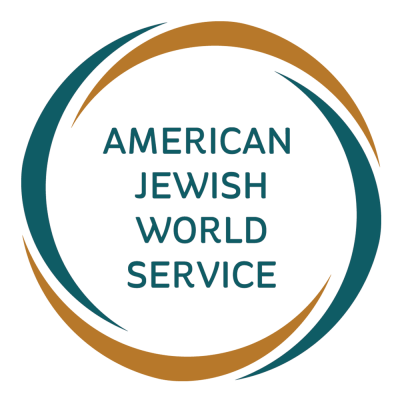A few weeks ago, I attended the International Human Rights Funders Group (IHRFG) conference with several other AJWS colleagues. My first time at IHRFG, I decided 2 furiously abbr., #hashtag & @mention for 2 days str8 (AKA Live Tweet) the sessions I attended in an effort to document the fascinating conversations going on at #IHRFG2012NY. Shameless plug: follow @AJWSinASIA!

For those of you who aren’t familiar with IHRFG or AJWS’s involvement, here’s a quick rundown:
What is IHRFG? IHRFG defines itself as a “global network of donors and grant-makers committed to advancing human rights around the world through effective philanthropy.” What does that mean, minus our wonk-speak? We’re a group of donors passionate about funding social justice movements and human rights work globally. We work all over the world. We come together to share experiences and learn from each other. We want to be the most strategic grant-makers we can be.
What does IHRFG do and how is AJWS involved? IHRFG is a membership organization made up of over 700 people and 300 grant-making institutions globally. AJWS has been an IHRFG member since December 2003 and we have increased our visibility in the space exponentially throughout the years.
IHRFG hosts conferences, institutes on various themes in human rights and social justice grant-making, teleconferences and webinars. IHRFG also coordinates and facilitates a series of funder working groups, which provide space for deeper-dives into a particular region or issue, like the Asia Pacific Funder Working group or the Disability Rights Working Group. (Full list of IHRFG working groups here.)
Here are some key lessons and insights from this year’s conference in New York, NY:
Map the money, map the impact. One of the biggest undertakings of IHRFG’s policy and research arm was unveiled at this year’s conference: an interactive map that allows members to search for grants by rights issue, population served, and location of grantee. Why is this map, created in collaboration with The Foundation Center, such a BIG DEAL? Because it represents a groundbreaking baseline for domestic and international human rights funding. Why do we care about a baseline? We want to increase the pool of human rights funding globally, and a data and trend analysis gives us leverage to do so. It allows us to see who has been and is currently funding what, where. That means we’ll be able to build better connections and become more strategic funders. Looking for other funders working on gender based violence in rural Bolivia? We’ve got a map for that.
The map is currently accessible to human rights grantmakers. IHRFG will release a public report at the end of 2012 that analyzes global human rights funding by issue area, population and geographic area served. IHRFG will also produce additional materials on the state of global human rights philanthropy in 2013.
Collaboration is like cake. It works best when there are multiple layers. In other words, for both grantees and funders, the ability to be nimble and respond to advocacy agendas or emergencies depends on the networks and alliances you build—the multiple layers it takes to reach a particular goal or outcome. Lilian Sepúlveda, Director of the Center for Reproductive Rights Global Legal Program, noted that there is a kind of symbiotic relationship between grassroots, national and international organizations in moving any kind of advocacy agenda forward. “With limited resources, suitable partnerships that compliment your strategy are key,” She said. “We all bring different things to the table.”
Listen to the organizations on the ground. One of the things that struck me was hearing Kasha Nabagasera from Freedom and Roam Uganda speak about donor-driven agendas. “Funders must come to the table on our terms. We know what our community needs.” Amen. So why don’t more donors respond to the organizations knee-deep in the issues? Rosanna Flamer-Calder from Equal Ground gave us some insight: “To be effective, funders need to see the situation on the ground.” Effective grant-making means being present, and not a lot of grantmakers spend time in the field.
Make “Human Rights” mean something: In the international grantmaking world, we use a lot of jargon. National Economic and Social Rights Initiative (NESRI) Executive Director Cathy Albisa made a great point that building momentum behind human rights starts with popular education and making the issues relevant to people’s daily lives. When Albisa said this, my mind immediately went to Burma-based grantee Karen Human Rights Group (KHRG). KHRG operates in the conflict areas of eastern Burma documenting human rights abuses. One of their flagship projects – The Village Agency Project – brings community members together to share and learn strategies for protecting themselves from abuses at the hands of the Burmese military. The point of bringing groups together is not to catalog “human rights abuses” but to develop resistance strategies and build solidarity between groups who are so often isolated by conflict. And that is making “human rights” mean something.
Stay tuned for more on the mapping project and other collaborations with IHRFG! Were you at IHRFG? Share your experiences with us!
Anne Lieberman is a former AJWS program associate for Asia.
AJWS’s work in countries and communities changes over time, responding to the evolving needs of partner organizations and the people they serve. To learn where AJWS is supporting activists and social justice movements today, please see Where We Work.

